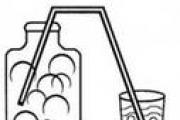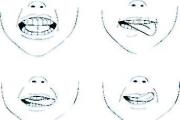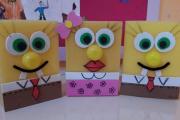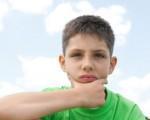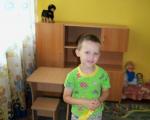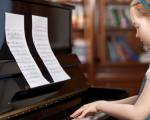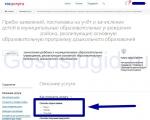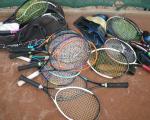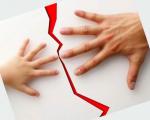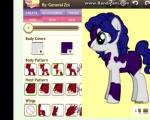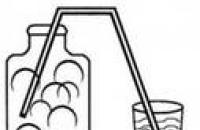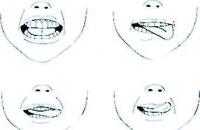It is difficult to find a child who would never fall and get a bump during his childhood. As soon as the toddler learns to stand, bumps, bruises and scratches appear on his body. The world around him is so interesting to him that he begins to actively study it. The consequences of such studies are often head injuries.
Most of the “flights” end for the little fidget without much damage to health. Bumps caused by a child, as well as abrasions and small wounds, quickly disappear without causing much trouble. Everything would be fine, but there are injuries that threaten not only the health of the baby, but also life. What to do in this case?
If you hit your head, you must consult with the on-duty traumatologist. Why are head impacts dangerous in young children?
Babies are fidgety - they constantly jump and run, which means they fall. As a result of these “flights,” bumps, bruises, abrasions, etc. appear on the head. Some parents do not pay attention, believing that this is normal and nothing needs to be done. This is their main mistake. If your child hits his head but doesn't complain, you should still see a doctor. Signs of injury may not appear immediately, but may take some time.
Depending on the complexity and nature of the injury, a head injury can provoke:
- epilepsy;
- intracranial hematoma turning into a tumor;
- encephalitis;
- traumatic meningitis.
When a child falls head down, he hits his forehead or fontanelle, resulting in a lump. Small vessels are injured upon impact, and the tissue around them fills with blood. This is how swelling and hematoma form. Thanks to the strong bones of the skull, such injuries do not pose a threat to the baby’s life.
It happens that a newborn or older baby falls on his back. Such a fall can lead to injury to the back of the head. Such bruises often cause serious complications that pose a danger to the baby’s life.
Damage to the back of the head causes:
- loss of consciousness;
- concussions;
- deformation of the skull with subsequent compression of the brain;
- tissue bruise of the main organ of the central nervous system;
- trembling legs.
When children fall, they can injure not only their head, but also their body (dislocate a leg or hit their neck). The possibility of spinal cord injury cannot be ruled out, which can lead to problems with the musculoskeletal system.
Types and symptoms of head injuries
Head injuries are divided into:
Open TBI is a head injury in which the integrity of the dura mater is disrupted, that is, the bones of the skull are crushed. The only treatment for such injuries is surgery.
With a closed injury, the skin and bones remain intact. Damage of this type includes:
- brain injury - characterized by loss of consciousness, nosebleeds, impaired speech and coordination, darkening of the skin in the eye area;
- bruise of soft tissues - as a result, a bump, bruise occurs, and prolonged crying is noted;
- concussion - can cause fever, severe vomiting, loss of consciousness for a short time, dizziness, clouding of consciousness.
If we consider head injuries by severity, the most harmless are bumps and bruises. They do not require medical attention and go away on their own. Next comes a concussion. It occurs in 90% of all head impacts. In third place in severity is brain injury and compression, which can lead to rupture of blood vessels. The most dangerous injury is an open head injury, which takes a very long and difficult time to heal.
 After a fall, you need to carefully monitor your child's behavior
After a fall, you need to carefully monitor your child's behavior What symptoms indicate that a child’s head blow has not gone away without leaving a trace and that it is necessary to immediately consult a doctor? First of all, you need to pay attention to the following signs:
- tearfulness, not typical before;
- loud crying;
- lethargy, drowsiness;
- eye pupils have different sizes;
- loss of consciousness immediately after the blow;
- nausea and vomiting;
- headache;
- weakness in the limbs;
- disturbances of the sensory organs.
If the child is not yet a year old, then the alarming symptoms are:
- bleeding from the ears or nose;
- pale skin;
- protrusion of the fontanelle (more details in the article:);
- bruises under the eyes (we recommend reading:);
- frequent regurgitation, uncharacteristic for a baby;
- poor appetite or its complete absence;
- problems with vestibulation;
- speech and hearing impairment;
- restless sleep with constant twitching of the limbs.
 Often, small children immediately fall asleep after hitting their head and crying for a short time.
Often, small children immediately fall asleep after hitting their head and crying for a short time. The body of infants can react to damage in other ways. Immediately after a head injury, the baby can fall asleep soundly, and then wake up full of strength and energy. In this case, parents should not relax too much, believing that the fall passed without consequences. This reaction of the baby’s body can hide the true danger of the injuries received.
Consequences for the child
The consequences of hitting your head are very different. They depend on what part of the baby’s head was hit and the severity of the injury.
If a child falls down a slide or hits his forehead on the floor or asphalt, then at best he will get away with a bump. The situation is much more serious when the consequence of a baby’s fall is a traumatic brain injury, which can be either open or closed:
- open TBI threatens the child with clouding of consciousness, damage to the skull bones and a bleeding wound on the head;
- the consequences of closed TBI are brain contusions or concussions (more details in the article:).
If the baby hits the back of the head or fontanelle, the outcome can be extremely negative. It can be expressed:
- disturbance of perception;
- absent-mindedness, inattention;
- anxious sleep;
- memory problems;
- headache (we recommend reading:).
 Hitting a baby with the back of the head or fontanelle can have very serious negative consequences.
Hitting a baby with the back of the head or fontanelle can have very serious negative consequences. You should not ignore the fact of a child’s head injury, because even a slight blow can lead to serious consequences:
- disruption of brain function;
- improper regulation of tone, which may result in increased blood pressure;
- impaired blood circulation;
- brain atrophy as a result of compression;
- increased intracranial pressure;
- cyst formation.
Timely initiation of therapy will help avoid negative consequences. The main thing is not to miss the moment.
How to provide first aid after a fall?
Due to the fact that no child is immune from falls and blows, every parent should know how to behave if the child is seriously injured. Timely first aid will help minimize the risk of developing severe complications.
To begin with, adults should carefully but very carefully examine the site of the injury and try to visually determine the severity of the injury. If a child gets a bump or a hematoma forms at the site of the impact, then immediately apply ice or something cold to it (for example, a bottle of cold water or a wet handkerchief). To reduce swelling, keep the cold compress for at least 5 minutes.
 It is recommended to apply a towel moistened with cold water to the site of the formed hematoma.
It is recommended to apply a towel moistened with cold water to the site of the formed hematoma. The child should be placed on the bed so that the head and spine are at the same level. If your baby suddenly has a fever and starts vomiting, he should be turned on his side. This position will ensure unhindered discharge of vomit. The victim will be able to breathe normally.
If, as a result of a fall, a child has an abrasion on his forehead and blood is flowing, it is necessary to treat the wound. The procedure will require a solution of hydrogen peroxide. It will prevent infection of the wound by pathogens. When the bleeding cannot be stopped, an ambulance should be called immediately.
The child may have a headache or dizziness (see also:). He may become too irritable and act up at the slightest provocation or even without it. The duration of his sleep increases, and the period of wakefulness, on the contrary, decreases. All of these symptoms may indicate that the victim has a serious head injury or concussion. If nausea, vomiting and loss of consciousness are added to all this, then parents urgently need to call a doctor.
Quite often it happens that the baby falls and hits his forehead, but there are no visible injuries at the site of the injury. In this case, parents should monitor the baby for several days and note the slightest deviations from the norm in his behavior.
What to do next?
After providing first aid, the child must be calmed down. Regardless of the force of the blow, the baby needs complete rest. To do this, he should be put in bed and, for example, read a book. It would also be a good idea to talk to him about what happened and explain that nothing bad happened, and as soon as he rests a little, he can continue playing.
Adults must do everything to keep the baby awake. He can't be allowed to sleep. Why? Because after injuries, many people begin to feel sleepy, but in this case, parents may miss the main symptoms indicating the severity of the injury.
At night, doctors strongly recommend waking up the child. This is necessary to test the victim's coordination. If, within a few days after the incident, the baby is in good health and absolutely nothing bothers him, parents can breathe a sigh of relief and no longer worry about this. The main thing they should provide is long, inactive walks with the child in the fresh air.
Diagnosis and treatment of head injuries
To find out whether the baby received a TBI due to impact, a number of tests and studies are carried out:
- Ultrasound of the brain for children under 1.5 years old;
- CT or MRI;
- electroencephalogram;
- Lumbar puncture.
 Ultrasound examination of the neck and head of a baby
Ultrasound examination of the neck and head of a baby If the diagnosis is confirmed, the child is prescribed treatment. It includes:
- a course of medications - anticonvulsants, antispasmodics and sedatives;
- physiotherapy;
- individual mode - absolute rest, which involves excluding active games and any other physical activity, reducing TV and PC viewing.
Concussion in one year old baby or a child 2 years of age or older needs to be treated inpatiently so that doctors have the opportunity to monitor the condition of the little patient around the clock. In the department, the baby is guaranteed to receive the physical and psycho-emotional peace he needs. Treatment lasts 7-10 days.
Preventive measures
There is no pill that could protect a baby from all injuries. But there are a few simple rules that will keep falls to a minimum:
- a one-month-old baby, while on a changing table, bed or in a stroller, should never be left alone;
- When changing a diaper, the mother must hold the baby;
- It is better to cover the floor around the sofa with pillows so that a child playing on top does not hurt himself if he falls;
- When putting your baby in the stroller, don’t forget to fasten it;
- If you stop, the wheels of the stroller must be put on the brakes;
- At home, put your child on socks with rubber inserts that prevent slipping;
- every sharp corner in the apartment should be masked with special devices;
- hold the baby’s hand tightly while going down the stairs with him;
- When buying roller skates or a bicycle for your child, do not forget to buy a helmet and knee pads.
If a child hits his head, this cannot be ignored, hoping that the blow was weak and the injury is not serious. The consequences of a concussion can be dangerous, so you need to know when to see a doctor.
What to do if your child hits his head
Falls in children happen quite often. In some cases, everything gets done with bruises and bumps, but sometimes the child needs medical attention.
If your child hits their head, you can apply a cold compress to the area of the injury.
Signs that parents should be alert to:
- The child did not start crying immediately after the impact, but after a few seconds. This may indicate that he lost consciousness for some time;
- The child became very pale and began to sweat;
- He begins to vomit or soon it turns out that his appetite has completely disappeared;
- Soon after the blow, the baby began to feel sleepy.
All these symptoms indicate that parents should seek medical help.
Infants deserve special attention. The bones of their skull are still soft, unfused. Their structure is such that the brain is reliably protected during falls, but at the same time, children's bones are more fragile.
If infant hit his head, the usual symptoms of vomiting and loss of consciousness may be absent. The baby still cannot talk about his condition, and he cannot hesitate in dangerous situations. Therefore, if a child under one year old hits his head, it is advisable to always call an ambulance. It is necessary to exclude concussion and fracture of the cranial vault.
Infants often hit their heads due to parental oversight, rolling off sofas and changing tables. As soon as the baby turns 3-4 months old, you cannot take your eyes off him for a minute.
But a small child can be injured by falling from his own height, for example, if he learns to stand on his feet.
A child fell and hit his head - first aid Due to their physiology, young children are constantly on the move. Bruises, scratches, abrasions and hematomas are commonplace, and parents know how to provide first aid to their son or daughter. But what to do if a child falls and hits his head, how to recognize the seriousness of the problem, not many people know about this.
After reading the article, you will learn what a concussion is, how to identify its symptoms and help your baby. Answers to important questions will help you make the right decision in a difficult situation and save the precious life and health of your baby.
What to do if your baby constantly falls and hits his head?
The world around us is full of dangers, children can encounter them everywhere. To protect your fidget from harm as much as possible, try to follow a number of simple requirements:
1. When transporting babies in a car, use special car seats and seat belts.
2. To ride an adult bicycle, purchase a high-quality and safe bicycle seat.
3. When rollerblading or cycling, make sure that young athletes wear protective helmets.
4. Teach kids that swinging swings, carousels, and iron exercise equipment are dangerous and can cause injury during movement.
5. Do not leave infants under 6 months of age unattended on changing tables. Remember, babies 1 year of age very often roll off beds, sofas and get concussions.
6. While walking on the playground with a child under 3 years old, carefully monitor him, never leave him alone near swings, high iron slides, or horizontal bars.
7. Teach your kids the rules of the road from infancy.
If the baby hits his head, this can lead to dire consequences. Despite the fact that the cranium reliably protects the brain from external factors, strong mechanical stress can disrupt the integrity of the bones and structures of the brain.
Hurry to the doctor!
If a fidget falls and hits his head, this is always bad. Ideally, after an accident, you need to go to a clinic and undergo an examination by a pediatrician, ophthalmologist, or neurologist.
Young researchers aged 1 and 2 years are just beginning to master the capabilities of their bodies; they learn to walk and run. In the process of learning about the world, babies often fall and hit their heads on the floor. This is a cause of concern for parents.
Moms and dads should know in which cases mandatory medical assistance is necessary, and when you can limit yourself to self-observation.
Call an ambulance, If:
The child is one, two, three months old and he hit his head when falling from a high changing table.
The baby was injured in contact with a sharp object (the back of a chair, the corner of a bed, a door).
The kid was in a car accident.
The mischievous boy fell from his stroller and adult bicycle onto the asphalt.
The baby suffered an injury to the back of his skull.
There is a violation of the integrity of the skull bones.
The baby cries loudly and cannot be calmed down for a long time after an accident.
The little mischief-maker hit his head hard on concrete, iron, or an asphalt surface; there are significant tissue cuts.
The baby experiences disturbances in the functioning of the central nervous system (confusion, fainting, lack of breathing, coma, lethargy, lethargy, etc.).
There is an open wound, severe.
The kid was hit on the head by a swinging iron swing, an exercise machine.
Carefully monitor the baby if he: fell and hit his head from a height of his height on a soft carpet or linoleum, his health and consciousness have not changed, there are no signs of brain damage.
If your little fidget hits his head, pay attention to his behavior, vision, pain, and external injuries. Vomiting, nausea, sleep disturbances, changes in behavior are an unfavorable sign.
Symptoms of a concussion
Nature took care of man. She created the child and made it so that when he learned to walk, if he fell, he would only suffer minor abrasions and bruises. The softness and plasticity of the skull bones helps protect the brain during an accident and reduce the risk of complications. That is why babies of 1 year of life, often falling from sofas, beds, changing tables, do not receive serious injuries.
Most often, minor falls in everyday life pass without leaving a trace, but sometimes young mischief-makers can be seriously injured. The severity of the injury depends on: the height of the fall, the hardness of the surface, the presence of sharp corners, the age of the victim, and the strength of the traumatic factor.
Signs of a concussion:
1. Lack of consciousness.
2. Nausea, vomiting, and in infants - frequent regurgitation.
3.Pale or blue discoloration of the skin.
4. Children under 3 years of age exhibit behavioral disturbances. They become lethargic, moody, drowsy, or hyperactive.
5. Children aged 4, 5, 6 years and older complain of pain in the head, which intensifies with sudden movements and bending.
6. An unstable body position is observed.
Signs of severe brain damage: coma, lack of consciousness, respiratory failure. In addition to general symptoms, a violation of the integrity of the skull, facial asymmetry, and paralysis of the limbs may be observed.
If parents notice at least 1 dangerous sign, call an ambulance and take the baby to the hospital. After examining a traumatologist, neurologist, or ophthalmologist, the doctors will come to a conclusion and give recommendations: is it possible to safely go home with the baby or is inpatient observation necessary?
Most mild concussions in children go away without leaving a trace. As treatment, doctors prescribe sedatives. For the fastest recovery, rest, leisurely walks in the fresh air in the park area, good sleep, and lack of mental stress are recommended. During therapy, it is forbidden to tense up, get nervous, watch TV or read books.
As a rule, if all doctors' recommendations are followed, the young researcher fully recovers within 2 - 3 weeks. Experiences, pain and tears are forgotten like a bad dream. The main task of parents is to learn a valuable lesson from what happened and protect their child in the future.
If a child often falls and hits his head, this is bad. In the future, he may experience: spontaneous headaches, impaired attention and concentration, memory impairment, increased nervous excitability.
It doesn’t matter how old or months old the victim is, carefully monitor the well-being of both the one-month-old child and the older mischievous child aged 5 - 7 - 12 years. If in any doubt, consult your doctor.
The baby's health is important!
If a young researcher has an accident and exhibits dangerous symptoms, do not hesitate to call an ambulance. After examination, if necessary, doctors transport the victim to the hospital. In the hospital, the doctor may prescribe additional examinations: skull, MRI (magnetic resonance imaging), computed tomography, lumbar puncture.
Children under 1.5 years old undergo neurosonography - an examination using ultrasound.
What to do if a child hits his head and has an open skull fracture?
The presence of severe injury can be determined visually: nasal congestion, different size pupil reactions, hemorrhages around the eyes, lack of consciousness, impaired breathing, heartbeat, and bone integrity.
In most cases, skull fractures occur during road traffic accidents, after falling on concrete from a height.
Dangerous complications of injury are: death, paralysis, paresis, epilepsy. After TBI (traumatic brain injury), inhibition, developmental delay, increased intracranial stress, stuttering, and epilepsy are observed.
The task of parents is to seek help from doctors as soon as possible after an accident. The best option would be to call an ambulance, since for many types of injuries, self-transportation is undesirable.
Before the doctors arrive, if the baby is conscious, try to calm him down and make sure he doesn’t move or get up. If calling an ambulance is not possible, carefully transport the victim to the hospital using your own transport.
First aid for minor bruises
A toddler over 1 year old fell and hit his head, this is a fairly common situation. If, after an accident occurs, the little champion quickly stops crying and has no dangerous symptoms, you can take a wait-and-see approach and carefully monitor the fidget’s behavior. After bruises, often at the site of impact.
To help the baby cope with an unpleasant situation, parents should:
1.Take control of your emotions and calm your baby.
2. If your little fidget falls and a bump forms on his forehead, apply cold to the area of the bruise for 3-10 minutes. To do this, use plastic bottle with frozen water, any product from the freezer. Before placing the medicinal bundle on your head, wrap it several times in clean cotton cloth.
3. You can read about detailed treatment of bruises, bumps and abrasions in the article.
Attention!
If your baby was injured, you went to an ambulance and went to the hospital; after the examination, a police officer may have a conversation with you. The law protects the rights of minors and takes care of their safety. If the baby is harmed through negligence or purposefully, the parents will bear criminal or administrative liability for this.
Conclusion
Due to the carelessness and neglect of parents, little fidgets aged from 1 month to 3-4 years very often become victims of accidents. You need to remember this and not violate basic safety rules. It is forbidden to leave the baby alone, hoping for his independence.
Children from 5 to 12 years old find themselves in unpleasant situations due to recklessness and the desire to excel. The desire to risk your life and belief in omnipotence quite often accompanies young men and women. In order for teenagers to be more attentive to their health, parents should instill in them the rules of personal safety from infancy. Remember, children are our reflection and their love for life begins in the family, thanks to their parents.
If your mischievous child has suffered a head injury or has symptoms of a concussion or brain injury, do not waste time and consult a doctor. Timely medical observation and treatment will help cope with troubles and eliminate the risk of complications.
According to statistics, in the first two years of life, children hit their heads much more often than in other periods, so almost all parents face the problem of injuries and bruises. Naturally, they begin to worry about the baby’s health, and their fears are not always unfounded. If a child hits his head, what should you pay attention to?
First of all, if your baby hits his head, pay attention to the severity of the injuries and his well-being not only at the time of the fall, but also over the next few days, because the consequences of the injury may not appear immediately and may be quite serious in severity.
A child fell and hit his head: how dangerous is this?
I immediately want to say: “Down with panic!” Hitting your head does not mean “damage something,” “severely injured,” or “there will be consequences.” Yes, sometimes head injuries due to falls can be very dangerous. But you should remember: a child’s body has the ability to quickly rehabilitate itself even after serious injuries, and in most cases protective mechanisms are triggered. And it’s not for nothing that children’s bones are called “soft”; it is because of their softness that the risk of fractures is reduced, while the degree of depreciation is high due to the large amount of cerebrospinal fluid.
And the so-called “fontanel” also plays the role of a shock absorber, and if the baby hits his head, it will help soften the force of the blow, protect against pressure changes, and protect the brain.
Infants always fall head down, because it is heavier in weight than the body, and they do not have stable coordination of movements.
Typical cases of head injuries in infants include the following:
- the baby is left unattended on the changing table, from which he falls to the floor;
- a baby sitting in a high chair and not secured with belts is pushed off with his feet and falls on his back, with the blow falling on the occipital region;
- the baby falls out of the crib, hitting his forehead on the floor;
- A baby on a walk tries to stand up in a stroller and, unable to find support, falls onto the asphalt.
Most likely, there is nothing to worry about since the fall occurred from an insignificant height. But to be on the safe side, it doesn’t hurt to pay close attention to the child’s well-being in the next few days.

The child hit his head - what to do?
In such a situation, adults should be ready to help the victim, because this is already half of the successful treatment of a bruise or injury. The first thing to do is to inspect the site of the impact and assess the nature of the damage, and then act according to the circumstances.
So:
- There are no visible injuries, but the baby continues to cry. The stressful situation and fear have taken their toll, so the parents’ task is to calm the child (pick him up, don’t raise his voice, especially don’t punish). A compress of a towel soaked in cold water should be applied to the site of the impact to reduce pain and prevent swelling.
- If a hematoma or bump has formed on the head from a blow, you should immediately apply ice or any product cooled in the refrigerator to it, that is, apply a cold compress for about 15-20 minutes, then let the child rest.
Advice! We must not forget that bruises are especially dangerous for young children! If a hematoma has formed on the forehead of an infant, it is better to immediately consult a doctor and not wait for other warning signs; he will examine the baby and give an opinion on the severity of the damage.

- It is dangerous when a child cuts his forehead and the wound bleeds. First you need to stop the bleeding: apply a bandage, scarf, towel and hold until the liquid stops oozing. Then the wound is treated with an antiseptic and covered with a bandage.
Advice! Take courage and carefully examine the wound. If it is superficial and looks more like a scratch, then it just needs to be treated. If it is wide (wider than 7 mm) or long (longer than 2 cm), with uneven edges (“torn”), and it is difficult to stop the bleeding, you need to urgently consult a doctor, as stitches will be necessary.
- If a child hits his head hard and symptoms of severe injury appear (nausea, vomiting, dizziness, fainting, etc.), if the baby’s condition suddenly or gradually worsens, then you should immediately seek medical help.
On the day of the fall and hit his head, the child's activity should be kept to a minimum. And immediately after an unpleasant incident, you should not put him to bed, because the baby’s condition may worsen, which will be difficult to notice.

The first day after injury: observing the reaction
It is important to promptly diagnose disorders due to injury in order to prevent negative consequences, so you will have to monitor the baby’s behavior and condition not only on the day of the fall, but also for the next few days. During this period of time, outdoor games, repeated head injuries, and physical activity are contraindicated for children. It is also not advisable to send a child to study or take him to kindergarten, he should be at home, under adult supervision.
What should you focus on?
- Is consciousness and coordination of movements impaired?
Advice! Wake up your sleeping baby and get him to his feet. If he maintains his balance, then his coordination is fine. Then ask a simple question and listen to what the answer is.
- Has speech changed (slowing down, stuttering, or lack of crying in the baby should alert you).
- Are there any deviations in behavior (decreased activity, loss of appetite, drowsiness).
- How you feel: are there headaches, dizziness, frequent vomiting (a single urge may not always be a sign of a concussion), pupils of different sizes, blueness under the eyes, discharge from the ears or nose, pale skin, convulsions, weakness of the limbs (babies usually do not support on one hand or pull the leg to the stomach).
If at least one of these symptoms is noticed, then you cannot waste time, because delay can be disastrous for the child, he should be shown to a doctor.

A child hit his forehead: what do you need to know?
The frontal bone is strong enough to withstand even strong blows. But here it is necessary to exclude severe traumatic brain injury, in comparison with which a bump on a child’s forehead may be the least of the problems.
They come in two types:
- open when the bones are crushed and there is a serious wound. Require immediate surgical intervention;
- closed when the skin and bones remain intact.
Closed injuries are not easy to identify and include:
- brain contusion, characterized by loss of consciousness, nasal discharge, darkening of the skin around the eyes against the background of general pallor of the skin, impaired coordination and speech;
- soft tissue bruise is the most harmless condition, which results in a bruise or bump, as well as long crying after a fall. However, it can also be dangerous if the child hit his forehead hard and after a while a depression formed in place of the bump or the bump itself became of an impressive size, complaints of nausea appeared or vomiting began, the skin turned pale, the lips turned blue, the pupils dilated, and breathing became heavy. All this is a reason to urgently go to the emergency room;
- concussion, which often occurs after strong blows, leads to short-term loss of consciousness, dizziness, profuse vomiting, and clouding of mind. Sometimes there are no obvious signs of a concussion, then they pay attention to the nature of the sleep: if it has become anxious, the baby makes sudden movements with its head, most likely it is present.

The presence of a concussion in children under one year of age is rare, but the condition as a whole needs to be assessed. Usually, after a fall, infants scream loudly, move restlessly, and often fall asleep after crying. Having awakened, they begin to be capricious and refuse food, after a while they burp once or repeatedly, and at night they twitch their limbs. The longer this happens, the higher the likelihood that the baby still received a concussion.
There may be another reaction to an injury: after a bruise, a baby falls asleep soundly and wakes up alert, which creates the erroneous impression of recovery and absence of damage. The danger is that at any moment the situation can change dramatically in the direction of worsening well-being.
Having noticed symptoms, parents should take care to call a doctor, without self-medicating and without giving the baby painkillers and other drugs, so as not to make it difficult for a specialist to make a diagnosis.
A child hit the back of his head: what are the consequences?
A blow to the back of the head is no less dangerous than to the forehead, and the same alarming symptoms appear, not to mention various negative consequences in case of untimely treatment.
So, complications after a blow to the back of the head include:
- disturbance of spatial perception (disorientation) and speech;
- frequent headaches (migraines).
This can be avoided if you seek medical help in a timely manner.
It is important to remember that a strong blow to the back of the head often leads to a concussion, so such injuries should be treated even more carefully than others associated with blows to the head.

It would be a good idea to take preventative measures to avoid traumatic situations, then you won’t have to wonder what to do if your child hits his head.
Therefore it is important:
- do not leave children (especially infants) unattended, always be nearby and provide protection in places of increased danger (for example, so that the child does not fall from a slide, swing or stairs);
- allow children to play only in safe places;
- teach children traffic rules;
- share information about following safety rules when riding a bicycle, wear a protective helmet, and if a child hits his head on the asphalt while riding, but there are no visible changes in behavior, it is better to play it safe and show him to a doctor;
- place the baby in a car seat if you plan to travel with him in the car.
Be attentive to your children!
Head injury in a child, “concussion” - Doctor Komarovsky - Emergency care
Often, the mobility and curiosity of children leads, due to parental oversight or accident, to falls and injuries. Such injuries are especially alarming under the age of three, while children cannot accurately describe their feelings and condition, and only external data and approximately the strength of the injury can be assessed if it occurred in front of their parents. The most worrisome are falls with head impacts, since the child’s brain is vulnerable to traumatic impacts, concussions, bruises and other damage. Almost no child grows and develops without falls and minor injuries; he learns about the world and his activity and freedom cannot be limited. But it is important to ensure maximum safety and know why head injuries are dangerous, how to help with them, and which symptoms for certain types of injuries, especially if the baby fell, hit the forehead or back of the head, are dangerous and which are not?
The structure of a child's head

Nature has taken care in advance to protect the child in certain ways in case of possible falls and injuries. At an early age, in order to avoid injury during childbirth, and then partially as they grow, the baby’s head has a special structure. The head at birth is large relative to the body, disproportionate to the rest of the body. And therefore, when babies fall from beds, sofas or changing tables, they fall forward with it. But there are also special positive, compensatory mechanisms.
note
In case of possible falls, if it is not at an extreme height, the brain of babies is relatively reliably protected from injury. The bones of the head are relatively elastic, not completely ossified; at the joints they have sutures, as well as a fontanelle, which, due to its elasticity, can compensate for changes in pressure in the cranial cavity.
The brain itself is surrounded by hard, soft and arachnoid membranes, floating in a liquid that compensates for shocks to a certain extent. These environments absorb the impact force quite strongly, so either a large impact force or a high altitude is needed for a young child to receive dangerous brain damage.
Hazardous surfaces and falls
For a baby, falls from a height equal to or less than his own height can be considered relatively safe. That is, this distance is about 50-60 cm. In addition, it is important, how the child did it, whether acceleration was imparted to the body or whether it was a fall under the influence of its own weight. The surfaces on which the head lands during falls are also important.

As the baby grows and begins to walk, falls occur:
- from your own height when walking and running,
- when walking in a walker, jumping in jumpers,
- when riding on gurneys, children's bicycles, sleds
- from chairs, when climbing on them,
- elements of furniture, when trying to climb higher,
- various sports equipment, outdoor slides, swings and carousels.
There are many options for falls, but the higher the distance from the place of the fall to the surface on which the child lands, and the denser and harder this surface, the more dangerous the injury.
note
If the fall occurred on a carpet or carpet, it will partially mitigate the injury, but if it is tile, linoleum or uneven surfaces, it is worse.
The likelihood of falls and injuries is directly proportional to the age of the young “pilot”. In early relapse (the first six months), falls are possible due to oversight or negligence of parents who left the baby unattended, or due to improper care, rough care and education, or domestic violence.
When learning to roll from side to side and gradually master crawling, pulling oneself up with one's hands, falls from sofas and beds are likely; for the most part, such falls are accompanied more by the fear of parents than by really dangerous injuries to children. Further, as you master walking. the risk of falls increases and vigilance needs to be increased. From the moment they master the space on their own two feet, when children are already walking, running and jumping, climbing everywhere, you need to increase your vigilance to the maximum.
note
Remember, even in your own home, let alone on the street, a child can receive dangerous and even fatal injuries. Plastic windows with mosquito nets are especially dangerous in the warm season. They will not support the weight of a child who, having climbed onto the windowsill, can lean on them. This threatens the death of the baby who fell out of the window.
But this does not mean at all that the baby needs to be locked within four walls and not allowed to actively develop and explore the space. We must be alert and on the alert.
For children under three years of age, the arm's length rule must apply; in dangerous places, the baby must be within the reach of the parents so that, if necessary, they have time to secure him.
The child hit his head: what to do?
 The first thing to do if a child falls and hits his head is not to panic and not to scare the child with your actions even more. Often, after a fall or injury, children cry more from fear and surprise than from pain. If there is only a small bump in the area of impact, the child is conscious and quickly calmed down, you need to create an atmosphere of peace around him, as if nothing had happened .
You should not let him scream loudly, jump and run a lot, observing his behavior and general condition. The first 24 hours are important in assessing the injury if a dangerous fall is suspected. Eat different kinds injuries according to their localization, and this makes them differ in tactics.
The first thing to do if a child falls and hits his head is not to panic and not to scare the child with your actions even more. Often, after a fall or injury, children cry more from fear and surprise than from pain. If there is only a small bump in the area of impact, the child is conscious and quickly calmed down, you need to create an atmosphere of peace around him, as if nothing had happened .
You should not let him scream loudly, jump and run a lot, observing his behavior and general condition. The first 24 hours are important in assessing the injury if a dangerous fall is suspected. Eat different kinds injuries according to their localization, and this makes them differ in tactics.
What to do if a child hits his forehead
Often, when struck in the frontal area, where the tissues are very pliable and richly supplied with blood, bumps appear. It's not dangerous, but it can be scary for parents. At the site of injury, small capillaries may burst, causing blood to leak into the tissue, forming bruising and swelling. There are many subcutaneous vessels in this area, as elsewhere on the face, which is why the swelling can be pronounced and severe, but the bone itself is strong enough, so most such injuries have no consequences .
However, the age of the baby is important; if it is an infant in the first months of life, and he has a hematoma on his forehead, it is worth showing the baby to a doctor to assess the extent of the injury.
What to do if a child hits the back of his head
Falls on your back and blows to the back of the head are more dangerous than the previous ones, It is important to show the child to a doctor in case of such an injury, because usually such falls occur from a sufficient height.
note
With such impacts, vision, coordination of movement and other functions may be impaired; there are many important centers of the brain in the occipital zone of the cortex. Such a fall with the formation of a lump is especially dangerous if the child experiences weakness and lethargy, trembling in the legs, etc.
If this happens, you should immediately call an ambulance. Such injuries in the area of fairly soft and pliable bones of the occipital zone can lead to skull cracks and concussions, brain contusions.
Traumatic brain injury in children
If there is a head injury, it is important to closely monitor the child and identify dangerous symptoms that may indicate the presence of a head injury. In this case, the role of the parents is great; they know the characteristics of the child well and will immediately notice deviations in his behavior and condition. The gender and age of the child are relative, as opposed to the height from which the child falls. The size of the bruise or lump that forms does not always correlate with the severity of the injury, as well as the presence or absence of blood, abrasions, and skin damage.
Signs such as:
- Clouding of consciousness or loss of consciousness, even if it was short, literally a few seconds.
- Any inappropriate actions and behavior, abnormal crying and screaming
- Disturbance in falling asleep, unusually long and deep sleep after a stroke
- , if the baby is older, attempts to grab the head that do not go away for several hours.
- Sudden or profuse regurgitation without fever or signs of infection
- Uncertain gait, swaying to the sides, problems with coordination of movements
- General convulsions or twitching of limbs
- Severe weakness in an arm or leg, an arm or leg hanging with a whip, movement disorders on one side.
- The appearance of bloody or bloody discharge from the ear or nose.
- Decreased hearing or vision, different size icons, squinting of one or both eyes, impaired muscle tone in the face, sagging of part of the face
- Coldness of the extremities, a sharp change in skin color (redness, pallor, marbling), especially on certain parts of the body.
All these symptoms indicate brain damage of varying severity.. The appearance of any, even one of them, is a reason to immediately call an ambulance and hospitalization in a hospital with a full examination. Based on the severity of the injury, head injuries can be divided into concussion, contusion and compression; their clinical symptoms vary, as well as severity and prognosis for subsequent health and life.
Signs of a concussion in children
 It is believed that this is a relatively simple and mild injury (but this is for doctors and treatment in a hospital). What is typical for him is a short-term disturbance of consciousness, loss of consciousness for no more than 5 minutes. There may be seizures and vomiting and dizziness. There is no damage to the brain, it simply experiences a kind of shock, which causes “interference in the air,” that is, the work of certain brain centers or cells is temporarily disrupted. Usually all brain functions return to normal within a week. The basis of treatment for a concussion is observation and rest, taking vitamins.
It is believed that this is a relatively simple and mild injury (but this is for doctors and treatment in a hospital). What is typical for him is a short-term disturbance of consciousness, loss of consciousness for no more than 5 minutes. There may be seizures and vomiting and dizziness. There is no damage to the brain, it simply experiences a kind of shock, which causes “interference in the air,” that is, the work of certain brain centers or cells is temporarily disrupted. Usually all brain functions return to normal within a week. The basis of treatment for a concussion is observation and rest, taking vitamins.
Signs of brain contusion in children
Brain contusion is a more serious injury; it affects the membranes of the brain and its substance itself, deep subcortical structures, blood vessels with the possible formation of hematomas, the formation of pronounced edema-swelling of the brain. In many ways, the prognosis and further treatment tactics will be influenced by the fact how long the loss of consciousness was. Based on the severity of brain contusions, doctors sometimes divide them into three stages, based on the duration of the unconscious period. If it is a mild bruise, consciousness usually returns within five minutes; with moderate severity, the unconscious state lasts from 10 minutes to an hour (give or take); with a severe brain bruise, consciousness may not return for several hours, or even days, even weeks - coma occurs.
What is brain compression in children
 Compression of the brain is usually formed against the background of damage to the bones of the skull, compression is formed inside its cavity, and the normal anatomical relationship of the brain, its membranes and bones is disrupted. With such a pathology, there may be cerebral vomiting due to increased intracranial pressure, periodic loss of consciousness with the appearance of “light” gaps. During this time, the child may behave quite normally, without showing signs that he has problems with the brain. They last up to two days, after which coma may occur.
Compression of the brain is usually formed against the background of damage to the bones of the skull, compression is formed inside its cavity, and the normal anatomical relationship of the brain, its membranes and bones is disrupted. With such a pathology, there may be cerebral vomiting due to increased intracranial pressure, periodic loss of consciousness with the appearance of “light” gaps. During this time, the child may behave quite normally, without showing signs that he has problems with the brain. They last up to two days, after which coma may occur.
Consequences of TBI can vary depending on which centers are damaged, how dangerous the injury was, how first aid was provided, and then treatment was carried out. If there is a bruise or compression of the brain without proper medical treatment, death is possible. Therefore, it is important that parents know how to provide first aid, recognize dangerous symptoms and consult a doctor in a timely manner without attempting self-medication.
Alena Paretskaya, pediatrician, medical columnist













 It is believed that this is a relatively simple and mild injury (but this is for doctors and treatment in a hospital). What is typical for him is a short-term disturbance of consciousness, loss of consciousness for no more than 5 minutes. There may be seizures and vomiting and dizziness. There is no damage to the brain, it simply experiences a kind of shock, which causes “interference in the air,” that is, the work of certain brain centers or cells is temporarily disrupted. Usually all brain functions return to normal within a week. The basis of treatment for a concussion is observation and rest, taking vitamins.
It is believed that this is a relatively simple and mild injury (but this is for doctors and treatment in a hospital). What is typical for him is a short-term disturbance of consciousness, loss of consciousness for no more than 5 minutes. There may be seizures and vomiting and dizziness. There is no damage to the brain, it simply experiences a kind of shock, which causes “interference in the air,” that is, the work of certain brain centers or cells is temporarily disrupted. Usually all brain functions return to normal within a week. The basis of treatment for a concussion is observation and rest, taking vitamins. Compression of the brain is usually formed against the background of damage to the bones of the skull, compression is formed inside its cavity, and the normal anatomical relationship of the brain, its membranes and bones is disrupted. With such a pathology, there may be cerebral vomiting due to increased intracranial pressure, periodic loss of consciousness with the appearance of “light” gaps. During this time, the child may behave quite normally, without showing signs that he has problems with the brain. They last up to two days, after which coma may occur.
Compression of the brain is usually formed against the background of damage to the bones of the skull, compression is formed inside its cavity, and the normal anatomical relationship of the brain, its membranes and bones is disrupted. With such a pathology, there may be cerebral vomiting due to increased intracranial pressure, periodic loss of consciousness with the appearance of “light” gaps. During this time, the child may behave quite normally, without showing signs that he has problems with the brain. They last up to two days, after which coma may occur.
